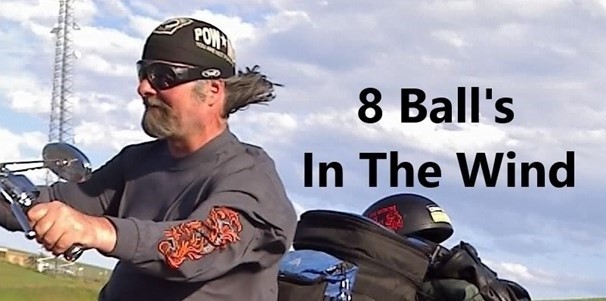A couple of weeks ago, the Governor’s Highway Safety Association (GHSA) released its preliminary data and findings regarding motorcycle fatalities in 2015. The GHSA represents the state and territorial highway safety offices that implement programs to address highway safety. This is a nationwide association, not just here in Washington. Although GHSA’s primary mission is to improve traffic safety, their latest report appears to be more focused on the scientifically unsupported concept that universal helmet laws are the best way to reduce highway fatalities among motorcyclists. Why do I say it is a “scientifically unsupported concept”? Because even the Federal government’s own data shows that motorcycle helmets are “estimated” (that’s the word that NHTSA uses when presenting this statistic) to be 37% effective in preventing injuries and fatalities to motorcycle riders. Another government statistic that would seem to fly in the face of the GHSA’s thinly veiled pushed for a national universal helmet law also comes from NHTSA. That statistic shows that among helmeted riders killed in traffic accidents, 81% died from trauma to parts of their body other than their head. In basically, in four out of five fatalities involving helmeted motorcyclists the helmet was irrelevant as a life saving measure.
It is important to remember that the GHSA is a political association. It is basically a government lobbying organization with a political agenda. That agenda is being passed off as one of traffic safety. However, when the agenda continues to be followed even when the governments own data shows it to be of questionable effect in saving lives, one must consider that the true agenda is control.
The GHSA preliminary report suggests a possible 10% increase in motorcycle fatalities. However, their data doesn’t draw a link to the possible rise and helmet use. The fact that 2015 had in many areas of the country an extended riding season, wasn’t accounted for. A significantly longer riding season would provide more opportunity for accidents to happen, and therefore; for a possible rise in fatalities. Other factors that the preliminary report seems to discount or not consider are; the rise in ridership, the experience and training of the riders, as well as the inclusion of possibly faulty preliminary data.
California for example; had no change in its helmet law, even though it did experience a drop in fatalities. What California did that was different, was put an emphasis on rider training. The GHSA report barely mentions rider training as a factor in the formula. It again, emphasizes universal helmet law as a prime factor in motorcycle safety. Rider experience is obliquely considered in the report with a statement that 25% of all motorcycle fatalities involved unendorsed/licensed riders.
Perhaps the most telling statistic that shows that the GHSA is following an agenda other than the highway safety it proclaims to pursue, is the lack of connectivity between their praise of a universal helmet law and the data. In Michigan in 2012 (the year they repealed their universal helmet law) there was a spike in the fatality rate, accompanied by a an even larger spike in millions of miles ridden.. However by 2014, the fatality rate dropped to 107, the second lowest rate since 2009. Of the nineteen states that have a universal helmet law, twelve saw an increase in motorcycle fatalities between 2014 and 2015, while ten of the helmet choice (or no helmet law) states saw a decrease. Again the data doesn’t support the GHSA’s position.
The bureaucratic mindset that would require a universal helmet law for motorcyclists is perhaps brought into focus by a letter from the CDC to US Congressman Thomas Petri in 2014. Here are a few excerpts of the letter, with my commentary on each in parentheses.
1. “Motor vehicle crashes, including motorcycle crashes, are the leading cause of death in the first three decades of life.” (The majority of those motor vehicle crashes do not involve motorcycles, yet only the motorcyclists are expected to accept the requirement that we wear a helmet. What sort of uproar would spread across the country if the government push for a truly universal helmet law for all motor vehicle operators and passengers? No doubt enough of one that even the idea is laughable among politicians and legislators.)
2. “41% of operators, and 50% of passengers who died in 2010 were not wearing a helmet.” (Since fewer people died while NOT wearing helmets than while wearing helmets, what logic dictates that the government should force all motorcyclists to wear helmets? So that 100% of the operators and passengers who die will be wearing helmets?)
3. “The CDC approaches motorcycle safety in the same manner as any other public health issues, such as heart disease, cancer, and asthma.” (So our freedom to choose how we transport ourselves and the risks involved is a disease? A disease that is actively and aggressively being sought a cure for?)
These demonstrate the bureaucratic mentality and its overreach in its search for control. That is why it can be so important to resist efforts to inflict their control over our abilities to exercise our Rights and Freedoms. The helmet issue is, in my opinion (and I am not a Constitutional scholar) a violation of our 14th Amendment Rights to equal protection under the law. If all motor vehicle operators were equally treated in regards to the threat of “traumatic brain injuries” (TBI’s); either all of us should be required to wear helmets, or none of us should be.
The relationship between TBI’s and helmets can be simply shown with a raw egg in a Styrofoam cup. If you drop the cup holding the egg, the cup may protect the shell from cracking, but it has no effect on the yoke from obeying Newton’s Laws and slamming into the shell. Even if the shell doesn’t crack the yoke may still be ruptured by the force of the impact. The yoke is your brain, and the Styrofoam cup is your helmet.
Catch you on the road sometime…
